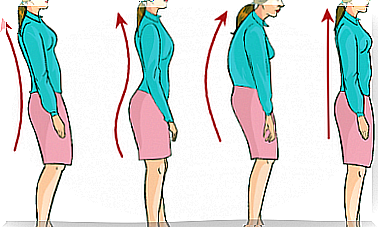Temporomandibular Tension Syndrome
Temporomandibular tension syndrome is also often called temporomandibular joint dysfunction. It corresponds to a group of conditions of the temporomandibular joint.
In all cases, what will be present will be pain in the area and an alteration in the function of the joint. In addition, it can have a significant impact on quality of life. What is it about? How to improve it? We will detail it below.
What is the temporomandibular joint?
It is the one that connects the jaw to the skull in the temporal region. It is located on both sides of the head, just in front of the ears. Its function is to allow the opening and closing of the mouth. This, in turn, is possible thanks to the so-called chewing muscles.
In talking, eating, yawning or laughing, we are putting it to use, so it is easy to see that we are using it constantly. For this reason, it is not uncommon to say that it is very common to see joint dysfunctions in adults. They even also occur in children, especially from 10 years of age.

What is Temporomandibular Tension Syndrome?
As we mentioned before, it is a group of conditions and is usually classified, depending on the origin of the problem, as muscular or joint. In fact, many times, both the joint and the chewing muscles are affected.
It may be unilateral or bilateral. It is more common in women. In addition, the most common age of presentation is between 20 and 44 years (approximately), although it can occur at any age.
It is characterized by the presence of:
- Acute or chronic pain related to jaw movement, usually in the area around the ear.
- Clicking of the joint during the opening and closing of the mouth.
- Limitation in the opening of the mouth, and the jaw may even lock.
- Head and neck pain
- Earache.
- Hums
- Decreased hearing acuity.
What are the possible causes?
The possible causes are very varied. In fact, on many occasions more than one may be present. Here are some of the common ones.
- Dental malocclusion.
- Habit of clenching the jaw.
- Pencil biting habit.
- Chew gum.
- Bruxism.
- Stress and anxiety.
- Increased sensitivity to pain.
- Rheumatoid arthritis.
- Joint infection
- Joint dislocation.
- Neoplasms
- Degenerative joint diseases.
- Trauma to the joint region.
- Displacement of the articular disc.
Often, to make the diagnosis, it will be enough for the specialist to take a medical history of pain and a physical examination of the area, including the neck region.
Sometimes an imaging study is requested, such as an X-ray, CT scan, or MRI. In case the doctor considers it necessary, he will carry out blood tests in order to make a differential diagnosis.

How to improve temporomandibular tension syndrome?
On many occasions, the causes of this syndrome coexist, and addressing solutions may require the participation of an interdisciplinary team. Sometimes it will be a temporary situation, which can even improve without any specific treatment.
However, on other occasions, treatment measures will be necessary that can improve pain and poor joint function. Now, there are actions that can be carried out by patients to reduce or control this syndrome. We’ll call them conservative measures, and they include the following:
- Avoid biting any inedible item (pencils, pens, nails, etc.).
- Keep the jaw slightly open, relaxed, to avoid having it constantly clenched.
- Be very careful or even avoid certain musical instruments that can strain the mouth, jaw or neck area.
- Apply muscle relaxation techniques.
- Place hot or cold compresses on the pain area.
- Improve sleep hygiene.
- Do muscle massage.
- Eat soft foods.
- Avoid wide jaw movements.
These measures will be very useful, always under the supervision of the specialist. Sometimes the doctor will prescribe pain relievers and physical therapy as well.
There are removable occlusal splints that, in some cases, can be helpful. On the other hand, in seriously ill patients, conservative measures are not enough and surgery will be necessary.
The prognosis may vary depending on the cause.
Fortunately, in most cases, cases respond well to conservative measures. Therefore, there is a good prognosis. However, it is convenient to make clear that, if the temporomandibular tension syndrome has its origin in a neoplasm, degenerative joint diseases, etc., the prognosis and evolution may vary.
Considering the above, the symptoms may improve or worsen depending on the evolution of the causative disease. Therefore, it is essential to make a good medical diagnosis and initiate treatment as appropriate.









